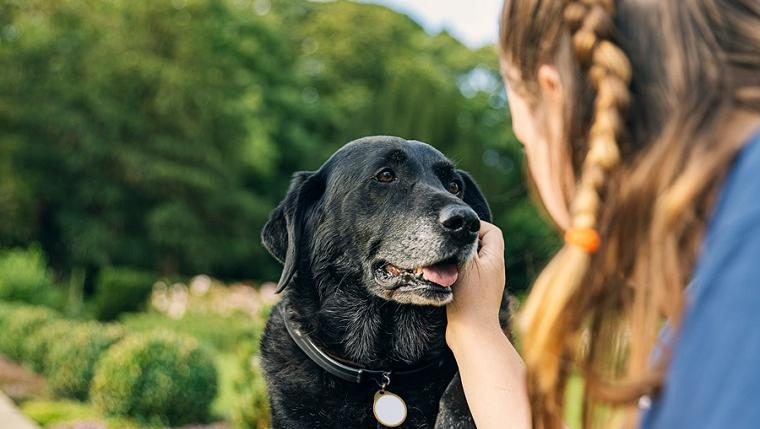Just like humans, dogs age gradually over time. As our once playful and energetic puppies transition into their golden years, their bodies and behaviors undergo significant changes. As responsible pet owners, it is crucial to recognize these changes and take appropriate measures to ensure their health and comfort in old age.
How to Determine If Your Dog Is Aging
There is no fixed timeline for when a dog officially becomes "old," but generally, a dog enters its senior years when it reaches the last third of its lifespan. More specifically:
• Small breeds: Around 8 years old.
• Medium breeds: Approximately 7 years old.
• Large and giant breeds: Since they have shorter lifespans, aging may begin around 6 years old.
However, this is just a rough estimate. The aging process varies depending on breed, genetics, and lifestyle. The best way to determine if a dog is aging is by observing its physical and behavioral changes.
Signs That Your Dog Is Aging
1.Noticeable Physical Changes
①Reduced appetite: Senior dogs may show less interest in food.
②Cloudy eyes: Their eyes may develop cloudiness or even cataracts.
③Skin and coat changes: The skin may become dry and loose, while the coat loses its shine, sheds more, or develops white hairs.
④Weight changes: Due to a slower metabolism, older dogs are prone to obesity, but sudden weight loss could indicate underlying health problems.
2.Declining Physical Abilities
①Decreased activity levels: Senior dogs become less energetic and may move more slowly.
②Lethargy: They may sleep more and show less interest in their surroundings.
③Hearing and vision loss: Some dogs experience gradual hearing and vision deterioration, which may lead to complete loss over time.
3.Behavioral and Cognitive Decline
①Disorientation: Older dogs may get lost in familiar surroundings or forget well-known routes.
②Memory loss: They may forget learned commands or routines.
③Mood swings: Some dogs may become irritable or anxious, while others may develop aggression. These changes may be linked to neurological conditions or cognitive decline and require veterinary attention.
4.Chronic Illnesses and Health Issues
①Arthritis: Common in senior dogs, making movement painful and difficult.
②Heart disease, diabetes, and tumors: The risk of these conditions significantly increases with age.
③Dental and urinary problems: Issues such as tooth loss, tartar buildup, and urinary tract infections become more frequent.
Senior Dog Care Guide
If your dog has entered its senior years, the following care tips can help maintain its health and quality of life:
1.Nutritious Diet
• High-quality protein: Helps maintain muscle mass in aging dogs.
• Low sodium and phosphorus: Reduces strain on the kidneys and prevents kidney disease.
• Increased fatty acids and fiber: Supports skin health and digestion.
• Avoid human food: Many human foods contain ingredients that are harmful to dogs.
• Limit treats: Excessive treats can lead to obesity and health issues.
2.Weight Management
• Regular, moderate exercise: Daily walks help control weight and promote mental well-being.
• Monitor sudden weight loss: Unexplained weight loss could indicate diabetes, cancer, or other serious illnesses.
3.Hydration and Urinary Health
• Monitor water intake: Excessive or reduced drinking may signal liver, kidney, or metabolic disorders.
• Observe urination patterns: Changes in urination frequency or volume may indicate urinary tract issues.
4.Eye and Ear Care
• Regular cleaning: Use pet-safe eye and ear cleaners to prevent infections.
• Watch for abnormalities: Redness, discharge, or foul odors require veterinary attention.
5.Routine Veterinary Checkups
• Annual checkups at minimum: Senior dogs should ideally receive a full health screening every six months.
• Recommended tests: Physical exams, dental assessments, imaging (X-rays or ultrasounds), urinalysis, blood tests, and biochemical panels.
6.Senior-Friendly Home Adjustments
• Non-slip flooring: Use rugs or mats to prevent slipping and falling.
• Raised food and water bowls: Reduces strain on the neck and joints.
• Ramps or steps: Helps dogs navigate stairs or high surfaces more easily.
It is often said that every relationship in life is on a countdown. While we cannot stop time, we can provide our aging dogs with the care and comfort they deserve. By recognizing the signs of aging and adjusting our caregiving strategies accordingly, we can help our beloved companions enjoy a happy and fulfilling old age. After all, they are more than just pets—they are cherished members of our family.





